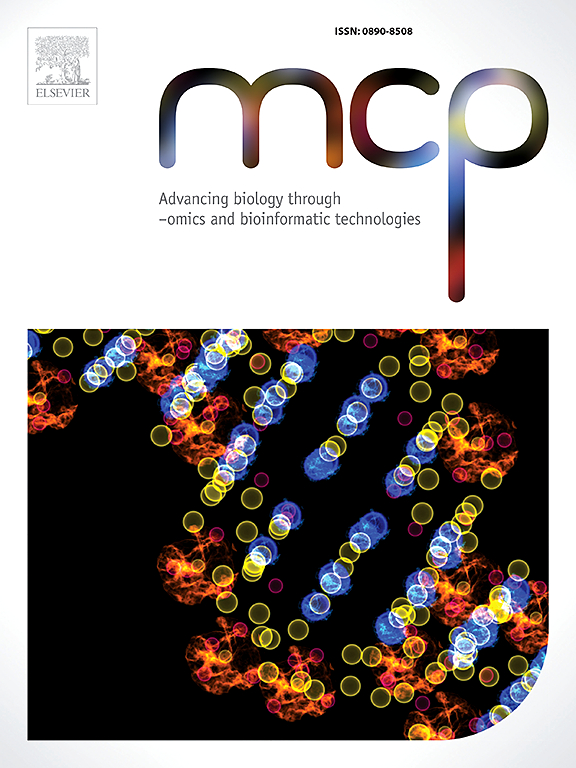Transcriptomic analysis of intracellular RNA granules and small extracellular vesicles: Unmasking their overlap in a cell model of Huntington's disease
IF 3
3区 生物学
Q3 BIOCHEMICAL RESEARCH METHODS
引用次数: 0
Abstract
Huntington's disease (HD) arises from the abnormal expansion of a CAG repeat in the HTT gene. The mutant CAG repeat triggers aberrant RNA-protein interactions and translates into toxic aggregate-prone polyglutamine protein. These aberrant RNA-protein ineractions also seed the formation of cytoplasmic liquid-like granules, such as stress granules. Emerging evidence demonstrates that granules formed via liquid-liquid phase separation can mature into gel-like inclusions that persist within the cell and may act as precursor to aggregates that occur in patients' tissue. Thus, deregulation of RNA granules is an important component of neurodegeneration. Interestingly, both the formation of intracellular membrane-less organelles like stress granules and the secretion of small extracellular vesicles (sEVs) increase upon stress and under disease conditions. sEVs are lipid membrane-bound particles that are secreted from all cell types and may participate in the spreading of misfolded proteins and aberrant RNA-protein complexes across the central nervous system in neurodegenerative diseases like HD. In this study, we performed a comparative transcriptomic analysis of sEVs and RNA granules in an HD model. RNA granules and sEVs were isolated from an inducible HD cell model. Both sEVs and RNA granules were isolated from induced (HD) and non-induced (control) cells and analyzed by RNA sequencing. Our comparative analysis between the transcriptomics data of HD RNA granules and sEVs showed that: (I) intracellular RNA granules and extracellular RNA vesicles share content, (II) several non-coding RNAs translocate to RNA granules, and (III) the composition of RNA granules and sEVs is affected in HD cells. Our data showing common transcripts in intracellular RNA granules and extracellular sEVs suggest that formation of RNA granules and sEV loading may be related. Moreover, we found a high abundance of lncRNAs in both control and HD samples, with several transcripts under REST regulation, highlighting their potential role in HD pathogenesis and selective incorporation into sEVs. The transcriptome cargo of RNA granules or sEVs may serve as a source for diagnostic strategies. For example, disease-specific RNA-signatures of sEVs can serve as biomarker of central nervous system diseases. Therefore, we compared our dataset to transcriptomic data from HD patient sEVs in blood. However, our data suggest that the cell-type specific signature of sEV-secreted RNAs as well as their high variability may make it difficult to detect these biomarkers in blood.
细胞内RNA颗粒和细胞外小泡的转录组学分析:揭示它们在亨廷顿病细胞模型中的重叠。
亨廷顿氏病(HD)是由HTT基因中CAG重复序列的异常扩增引起的。突变的CAG重复序列触发异常的rna -蛋白相互作用,并转化为有毒的易聚集的聚谷氨酰胺蛋白。这些异常的rna -蛋白相互作用也为细胞质液体样颗粒的形成提供了种子,如应激颗粒。新出现的证据表明,通过液-液相分离形成的颗粒可以成熟为凝胶样的内含物,这些内含物可以在细胞内持续存在,并可能作为患者组织中聚集物的前体。因此,RNA颗粒的解除管制是神经变性的重要组成部分。有趣的是,在应激和疾病条件下,细胞内无膜细胞器(如应激颗粒)的形成和小细胞外囊泡(sev)的分泌都增加。sev是脂质膜结合颗粒,由所有细胞类型分泌,在HD等神经退行性疾病中可能参与错误折叠蛋白和异常rna -蛋白复合物在中枢神经系统的扩散。在这项研究中,我们在HD模型中对sev和RNA颗粒进行了比较转录组学分析。从诱导型HD细胞模型中分离到RNA颗粒和sev。从诱导细胞(HD)和非诱导细胞(对照)中分离sev和RNA颗粒,并通过RNA测序进行分析。我们对HD RNA颗粒和sev转录组学数据的比较分析表明:(I)细胞内RNA颗粒和细胞外RNA囊泡共享内容,(II)一些非编码RNA转运到RNA颗粒,(III) HD细胞中RNA颗粒和sev的组成受到影响。我们的数据显示细胞内RNA颗粒和细胞外sEV的共同转录本表明RNA颗粒的形成和sEV负载可能相关。此外,我们在对照和HD样本中都发现了高丰度的lncrna,其中有几个转录本受REST调控,这突出了它们在HD发病机制和选择性并入sev中的潜在作用。RNA颗粒或sev的转录组货物可以作为诊断策略的来源。例如,sev的疾病特异性rna标记可以作为中枢神经系统疾病的生物标志物。因此,我们将我们的数据集与HD患者血液中sev的转录组学数据进行了比较。然而,我们的数据表明,sev分泌的rna的细胞类型特异性特征以及它们的高变异性可能使得在血液中检测这些生物标志物变得困难。
本文章由计算机程序翻译,如有差异,请以英文原文为准。
求助全文
约1分钟内获得全文
求助全文
来源期刊

Molecular and Cellular Probes
生物-生化研究方法
CiteScore
6.80
自引率
0.00%
发文量
52
审稿时长
16 days
期刊介绍:
MCP - Advancing biology through–omics and bioinformatic technologies wants to capture outcomes from the current revolution in molecular technologies and sciences. The journal has broadened its scope and embraces any high quality research papers, reviews and opinions in areas including, but not limited to, molecular biology, cell biology, biochemistry, immunology, physiology, epidemiology, ecology, virology, microbiology, parasitology, genetics, evolutionary biology, genomics (including metagenomics), bioinformatics, proteomics, metabolomics, glycomics, and lipidomics. Submissions with a technology-driven focus on understanding normal biological or disease processes as well as conceptual advances and paradigm shifts are particularly encouraged. The Editors welcome fundamental or applied research areas; pre-submission enquiries about advanced draft manuscripts are welcomed. Top quality research and manuscripts will be fast-tracked.
 求助内容:
求助内容: 应助结果提醒方式:
应助结果提醒方式:


